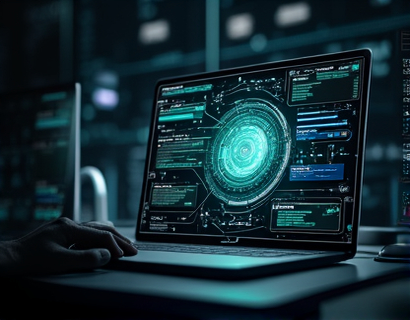Blockchain-Powered Online Notarization: Revolutionizing Document Security
In an era where digital transformation is reshaping industries, the need for secure and efficient document management has become paramount. Traditional notarization processes, while crucial for ensuring the authenticity and legality of documents, often suffer from inefficiencies, lack of transparency, and vulnerability to tampering. The advent of blockchain technology offers a groundbreaking solution, introducing a new paradigm in document security through online notarization. This article delves into how blockchain-powered online notarization is transforming the way we secure and manage documents, providing a decentralized, transparent, and robust framework that benefits legal professionals and businesses alike.
Understanding Blockchain Technology
Before exploring its application in online notarization, it's essential to grasp the fundamentals of blockchain technology. At its core, a blockchain is a distributed ledger that records transactions across multiple computers in such a way that the registered transactions cannot be altered retroactively. This technology ensures data integrity and security through cryptographic hashing and consensus mechanisms. Each block in the chain contains a cryptographic hash of the previous block, a timestamp, and transaction data, creating an immutable and transparent record.
Decentralized Trust in Document Notarization
The traditional notarization process relies on a centralized authority, typically a government-appointed notary public, to verify the identity of the signatories and the authenticity of the document. While this system has served its purpose, it is not without flaws. Centralized systems are prone to single points of failure, potential corruption, and delays. Blockchain technology addresses these issues by distributing trust across a network of nodes, eliminating the need for a central authority. In the context of online notarization, this means that the verification and validation of documents can be performed by a decentralized network, enhancing security and reducing the risk of tampering.
Enhanced Security Through Cryptography
One of the most significant advantages of blockchain-powered online notarization is the robust security it provides. Each document is encrypted and linked to the previous document through a cryptographic hash, forming an unbreakable chain. Any attempt to alter a document would require changing all subsequent blocks, which is computationally infeasible due to the consensus mechanisms in place. This ensures that once a document is notarized and added to the blockchain, it remains tamper-evident and secure. The use of advanced cryptographic techniques, such as digital signatures and public-private key pairs, further fortifies the security of the notarization process.
Transparency and Traceability
Transparency is a cornerstone of blockchain technology, and it plays a vital role in online notarization. Every transaction, including the notarization of a document, is recorded on the blockchain and is visible to all participants in the network. This transparency ensures that all stakeholders can verify the authenticity and integrity of the document at any point in time. The immutable nature of the blockchain provides a clear and traceable history of the document, from creation to notarization and beyond. This level of transparency builds trust among users and reduces the risk of fraudulent activities.
Efficiency and Accessibility
The traditional notarization process often involves physical document submission, manual verification, and delayed processing times. Blockchain-powered online notarization streamlines this process, making it faster and more accessible. Documents can be uploaded, verified, and notarized electronically, reducing the need for physical presence and paper-based workflows. This not only accelerates the notarization process but also lowers costs associated with physical handling and storage. For legal professionals and businesses, this means increased efficiency and the ability to handle a higher volume of documents with greater ease.
User-Friendly Interface
Despite the complexity of blockchain technology, the user experience for online notarization should be intuitive and user-friendly. A well-designed platform ensures that users can easily upload, verify, and manage their documents without requiring extensive technical knowledge. The interface should guide users through each step of the process, providing clear instructions and real-time feedback. This accessibility is crucial for widespread adoption, as it allows a broader range of users, including those less familiar with digital technologies, to benefit from the advantages of blockchain-powered notarization.
Regulatory Compliance and Legal Recognition
For blockchain-powered online notarization to gain widespread acceptance, it must meet regulatory standards and be recognized by legal systems. Many jurisdictions are beginning to acknowledge the validity of electronically notarized documents, provided they meet specific criteria. Blockchain-based notarization services can be designed to comply with these regulations by incorporating features such as identity verification, geolocation, and timestamping. By ensuring compliance, these services can be integrated into legal frameworks, providing a legally binding and enforceable notarization process.
Case Studies and Real-World Applications
Several organizations have already begun to implement blockchain-powered online notarization, demonstrating its practical applications and benefits. For instance, a legal firm in a major city utilized a blockchain-based notarization service to streamline its document management process. The firm reported a significant reduction in processing times and a decrease in errors related to document tampering. Another example is a cross-border business that used blockchain notarization to ensure the authenticity of international contracts, eliminating the need for multiple notary stamps and reducing the risk of fraud.
Challenges and Future Developments
While the potential of blockchain-powered online notarization is vast, there are challenges that need to be addressed to fully realize its benefits. One of the primary challenges is the need for widespread adoption and standardization across different jurisdictions. Interoperability between blockchain platforms and existing legal systems is crucial for seamless integration. Additionally, educating users and stakeholders about the advantages and functionality of blockchain-based notarization is essential for broader acceptance.
Technological advancements, such as the development of more efficient consensus algorithms and improved user interfaces, will continue to enhance the usability and scalability of these platforms. The integration of artificial intelligence and machine learning can further optimize the notarization process, automating verification tasks and enhancing security measures. As the technology matures, we can expect to see more innovative applications and a greater adoption rate across various industries.
Conclusion
Blockchain-powered online notarization represents a significant leap forward in document security and management. By leveraging the inherent properties of blockchain technology, such as decentralized trust, cryptographic security, transparency, and efficiency, this approach offers a robust solution to the challenges faced by traditional notarization methods. For legal professionals and businesses seeking reliable and trustworthy notarization solutions, blockchain-based services provide a future-proof and highly secure alternative. As the technology continues to evolve, we can anticipate even more innovative applications and a broader impact across industries.










































